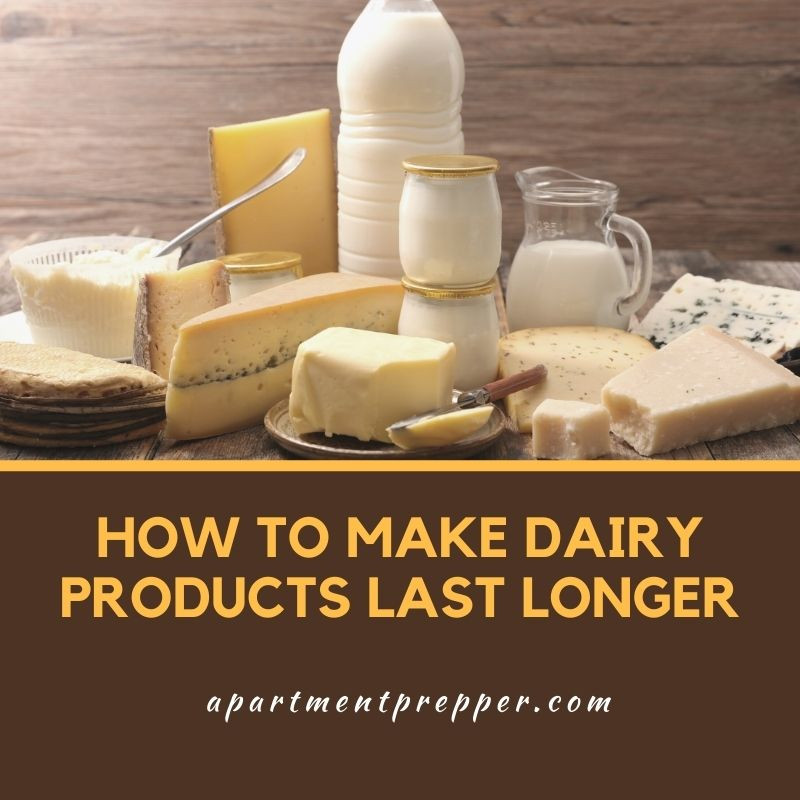This post is by Bernie Carr
Since the pandemic started, many people are limiting their trips to the grocery store. We used to go grocery shopping once a week; now we have stretched out our grocery shopping to once every two weeks. Dairy products are some of the most perishable items in our grocery list. We recently had a half gallon of milk go bad right before the expiration date. I just hate to waste food so I started trying to find ways to make dairy products last longer.
Milk
Buy organic
When you look at expiration dates of organic and non-organic, you may notice the organic ones have a longer period of time before expiration. That’s because organic milk is treated using a different method than regular pasteurization, according to Scientific American. Organic products tend to be produced in a few areas throughout the country so they have to be shipped further away to reach grocery shelves. Therefore, organic milk is treated via a process called ultrahigh temperature (UHT) using higher temperatures than standard pasteurization. The milk is heated to 280 degrees Fahrenheit (instead of for two to four seconds, killing any bacteria in it.
If you prefer not to spend the extra dollars on organic, don’t fret, there are more tips.
Find the coldest storage
A lot of people store milk in the refrigerator door but that is actually the worst place in terms of temperature. Every time someone opens the fridge, the milk gets exposed to warm air.
Store milk in the coldest part of the fridge, which is usually near the bottom of the fridge or way in the back.
Add a pinch of salt
I’ve actually tried this hack – add a pinch of salt to the milk to make it last longer. That’s because salt is a preservative. Add just a pinch – you don’t want to taste salty milk!
This tip also works for heavy cream and half-and-half.
Freeze it
The best way I found to make milk last longer is by freezing it. Here are a couple of ways:
- Freeze milk in the plastic container it came in, but pour out a cup or two. Seal then freeze. Liquid expands when frozen, so this avoids the container from cracking. Thaw overnight in the fridge before using.
- Pour milk into ice cube trays and freeze. Once they are frozen, transfer the milk cubes into a sealable bag. Add ice cubes to your coffee or tea as needed.
Butter
Butter lasts for a while but it can absorb odors in the fridge and go bad.
Freezing
I freeze the butter while still in the original box. I take out a stick and place in the refrigerator when ready to use.
Store in a sealed container
To keep butter from absorbing odors, store the stick in a sealed container.
Yogurt and sour cream
Store them upside down
The best way I’ve found to make yogurt and sour cream last longer is by storing them upside down in the fridge. This keeps mold from forming.
Cheese
Choose hard cheeses
Cheddar, parmesan, asiago, monterey jack are harder cheeses last longer than soft cheeses. A small amount of mold in these type of cheeses can be sliced off with no problem. However, if it is a large amount of mold, I’d toss it out. Individually wrapped cheese slices such as American cheese also last a long time. I’ve had those cheese slices last over a month in the fridge.
Cottage and ricotta cheese
Store cottage and ricotta cheese upside down in their plastic containers, just as described for yogurt and sour cream.
Use a cheese vault
A cheese vault is an airtight container with a very tight seal. Most of them run around $30, however, this deli keeper works just as well at a third of the price. Do not store meats and cheeses together – they must be stored separately.
Extra wrapping
Another way to store cheese is by removing it from it’s original package then wrapping it in parchment paper. Place the wrapped cheese in a resealable plastic bag – date the bag with a sharpie with the name of the cheese and date you purchased it. Store the cheese in a separate area away from other odorous foods such as onions.
What about freezing cheese?
You can freeze hard and semi-hard cheeses in their original packaging, or stored in parchment paper and a resealable bag as described above. Thaw the cheese by placing it in the refrigerator overnight so it can thaw slowly. There will be a change in texture so the cheese may not taste as good eaten by itself. The resulting cheese will be more dry and crumbly. But the cheese will work fine cooked in recipes such as macaroni and cheese, lasagna or quesadillas.
These tips have worked for me – if you have tips that you can recommend, please share in the comments!
We are an affiliate of Amazon.com, which means we received a small commission if you click through one of our Amazon links when you shop, at totally no cost to you. This helps keep the lights on at the blog. Thanks!
About the author:
Bernie Carr is the founder of Apartment Prepper. She has written several books including the best-selling Prepper’s Pocket Guide, Jake and Miller’s Big Adventure, The Penny-Pinching Prepper and How to Prepare for Most Emergencies on a $50 a Month Budget. Her work appears in sites such as the Allstate Blog and Clark.com, as well as print magazines such as Backwoods Survival Guide and Prepper Survival Guide. She has been featured in national publications such as Fox Business and Popular Mechanics. Learn more about Bernie here.


